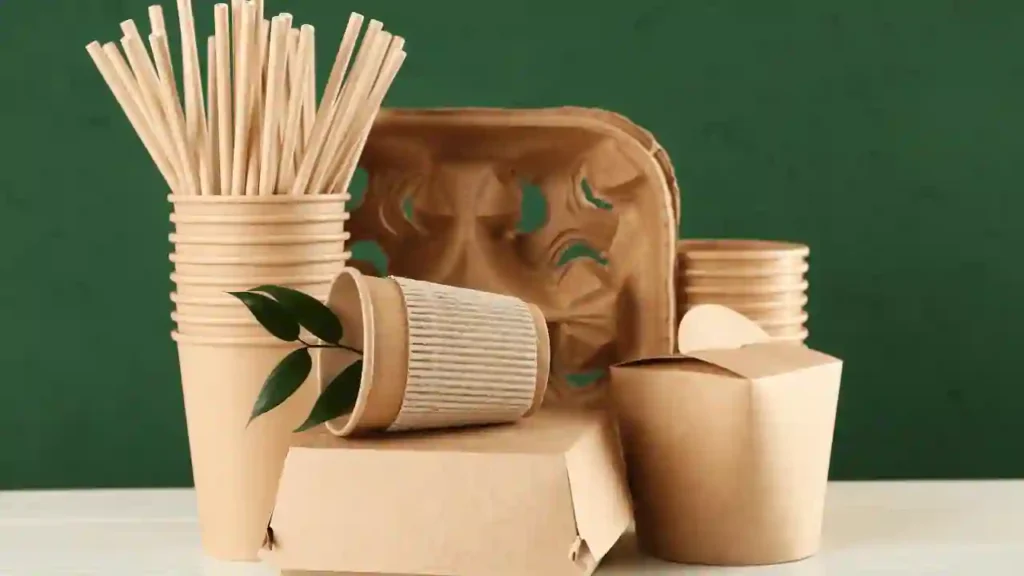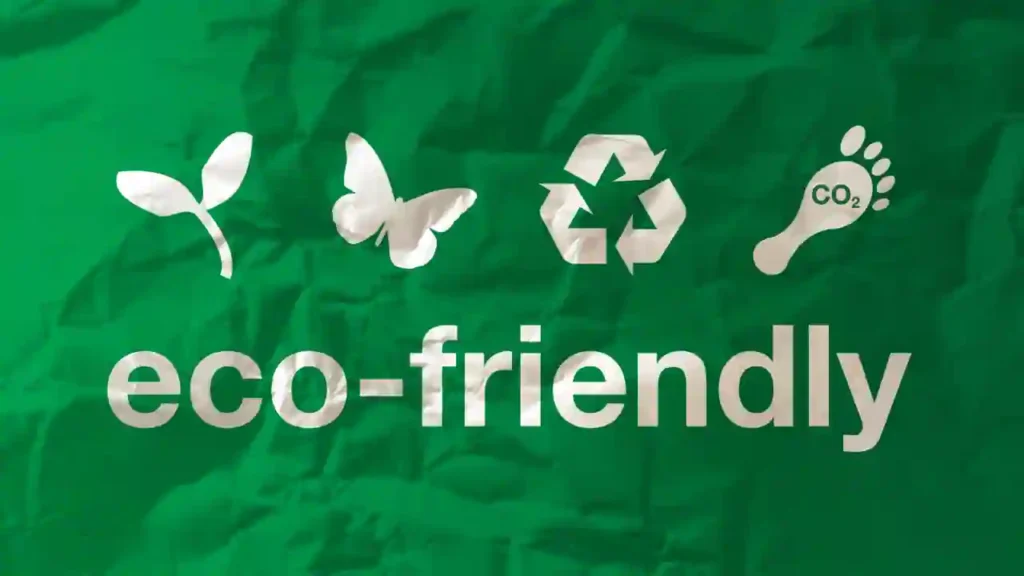In today’s rapidly evolving world, instilling a sense of environmental responsibility in young minds has become more critical than ever. One powerful way to achieve this is through incorporating eco-friendly practices into primary school projects, particularly in the realm of arts and crafts. By using environmentally friendly art supplies for primary school projects, educators can not only nurture creativity but also teach valuable lessons about sustainability and environmental stewardship. So, what exactly are these eco-conscious materials suitable for primary school projects?

Exploring Eco-Friendly Craft Materials
Recycled Paper: One of the simplest yet most effective eco-friendly materials for primary school projects is recycled paper. Whether it’s drawing, painting, or collage, using paper made from recycled fibres reduces the demand for virgin wood pulp and helps conserve natural resources. Additionally, it teaches students the concept of recycling and demonstrates how everyday materials can be repurposed to create something new with environmentally friendly art supplies for primary school projects.
Recycled Paper: Plant-Based Paints: Traditional paints often contain volatile organic compounds (VOCs) and other harmful chemicals. In contrast, plant-based paints, made from natural ingredients such as plant pigments, clay, and vegetable oils, offer a safer and more sustainable alternative. These paints come in a variety of vibrant colors and can be used for painting projects of all kinds, from landscapes to portraits, with environmentally friendly art supplies for primary school projects.
Biodegradable Glues: Glue is a staple in any crafting activity, but conventional adhesives often contain synthetic chemicals that are harmful to both health and the environment. Biodegradable glues, on the other hand, are made from natural ingredients such as starch or plant-based resins, making them non-toxic and compostable. They provide strong adhesion while minimizing the environmental impact of art projects.
Organic Modeling Clay: For sculpting and modeling projects, organic modeling clay made from natural materials like beeswax or vegetable-based compounds is an excellent choice. Not only is it safer for children to handle, but it also promotes creativity and sensory exploration. Plus, organic modeling clay can be reused or composted after use, further reducing waste with environmentally friendly art supplies for primary school projects.
Sustainable Brushes: Brushes are essential tools for painting and crafting, and choosing sustainable options can make a significant difference. Look for brushes made from sustainably sourced wood or bamboo handles and cruelty-free bristles. These brushes are durable, eco-friendly, and help instill a sense of respect for nature in young artists using environmentally friendly art supplies for primary school projects.
Incorporating Eco-Friendly Crafting in Primary Education
Now that we’ve explored some eco-friendly craft materials suitable for primary school projects, let’s discuss how educators can incorporate these materials into their teaching practices. Integrating eco-friendly crafting into the curriculum provides an opportunity to engage students in hands-on learning experiences while fostering environmental awareness and creativity.
Teachers can:
- Introduce students to the concept of sustainability and explain the importance of using eco-friendly materials.
- Incorporate discussions about recycling, conservation, and environmental protection into art lessons.
- Encourage students to explore the natural world for inspiration and to connect with their surroundings.
- Showcase examples of eco-friendly artwork and artists who prioritize sustainability in their practice.
- Collaborate with local artists or environmental organizations to organize workshops or educational events focused on eco-friendly crafting.
- By making conscious choices about the materials they use and the lessons they teach, educators can inspire a new generation of environmentally conscious artists and thinkers.
Environmental Benefits of Making Eco-friendly Crafts
Making eco-friendly crafts offers several environmental benefits:
Reduced Waste: Eco-friendly crafts often utilize materials that are recycled, upcycled, or biodegradable. By repurposing materials that would otherwise end up in landfills, eco-friendly crafting with environmentally friendly art supplies for primary school projects helps reduce waste and minimize environmental impact.
Conservation of Resources: Many traditional art supplies are made from non-renewable resources such as petroleum-based plastics or virgin wood pulp. In contrast, eco-friendly crafting materials are often sourced from renewable resources or recycled materials, helping to conserve natural resources and reduce the depletion of forests and other ecosystems.
Lower Carbon Footprint: Eco-friendly crafting materials typically have a lower carbon footprint compared to their conventional counterparts. This is because they often require less energy and resources to produce, transport, and dispose of. By choosing eco-friendly materials, crafters can reduce their overall carbon emissions and contribute to mitigating climate change.
Less Pollution: Conventional art supplies may contain toxic chemicals or emit harmful VOCs (volatile organic compounds) during production and use. Eco-friendly crafting materials, on the other hand, are made from natural or non-toxic ingredients, reducing the risk of pollution and harmful emissions into the environment.
Support for Sustainable Practices: By opting for eco-friendly crafting materials, individuals support businesses and industries that prioritize sustainability and environmental stewardship. This helps promote the adoption of sustainable practices across various sectors, leading to a more eco-conscious and responsible society.
Overall, making eco-friendly crafts not only allows individuals to express their creativity but also contributes to a healthier planet by reducing waste, conserving resources, lowering carbon emissions, minimizing pollution, and supporting sustainable practices.

Some easy-to-follow tutorials for eco-friendly craft projects in primary schools
Here are some easy-to-follow tutorials for eco-friendly craft projects suitable for primary schools:
1. Recycled Paper Crafts:
Tutorial: Teach students how to make handmade paper from recycled materials such as old newspapers or magazines.
Steps:
- Shred the paper into small pieces and soak them in water overnight.
- Blend the soaked paper with more water until it forms a pulp.
- Pour the pulp onto a screen or mesh and press out excess water.
- Allow the paper to dry completely before using it to create cards, bookmarks, or art pieces.
2. DIY Plantable Seed Paper:
Tutorial: Guide students in making plantable seed paper, which can be planted in soil to grow flowers or herbs.
Steps:
- Follow the steps for making recycled paper as mentioned above.
- Before pressing out the excess water, mix in flower or herb seeds into the pulp.
- Press out the water and allow the paper to dry completely.
- Cut the paper into shapes like hearts or stars and decorate them.
- When ready, plant the paper in soil and watch the seeds sprout.
3. Natural Dyeing with Food Scraps:
Tutorial: Show students how to create natural dyes using food scraps like onion skins, beet tops, or avocado pits.
Steps:
- Collect food scraps such as onion skins, beet tops, or avocado pits.
- Simmer the scraps in water for about an hour to extract the dye.
- Strain the dye and let it cool.
- Dip fabric or yarn into the dye and let it soak for desired color intensity.
- Rinse the dyed material with water and let it dry.
4. Recycled Bottle Planters:
Tutorial: Demonstrate how to repurpose plastic bottles into colorful planters for small plants or herbs.
Steps:
- Cut the top off a plastic bottle and decorate the outside with non-toxic paint or markers.
- Poke holes in the bottom for drainage.
- Fill the bottle with potting soil and plant seeds or small plants.
- Water the plants and place the bottle planter in a sunny spot.
5. Upcycled CD Wind Spinners:
Tutorial: Instruct students on how to transform old CDs into vibrant wind spinners for outdoor decoration.
Steps:
- Decorate the shiny side of old CDs with permanent markers or acrylic paint.
- Attach a string or ribbon to the center hole of the CD for hanging.
- Hang the CDs outdoors in a location with a breeze, such as a tree branch or porch, and watch them spin and catch the light.
These easy-to-follow tutorials provide engaging and eco-friendly craft projects that primary school students can enjoy while learning about sustainability and creativity.
In conclusion, incorporating environmentally friendly art supplies into primary school projects offers a valuable opportunity to teach children about sustainability, creativity, and environmental responsibility. From recycled paper to plant-based paints, there is a wide range of eco-friendly materials available for educators to explore and incorporate into their teaching practices with environmentally friendly art supplies for primary school projects. By embracing eco-friendly crafting, educators can empower students to become stewards of the planet and advocates for a more sustainable future. Through art, they can not only express themselves but also make a positive impact on the world around them.
